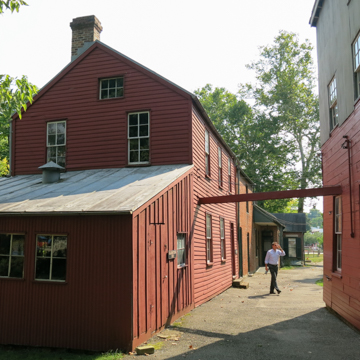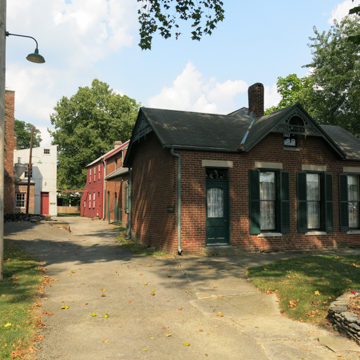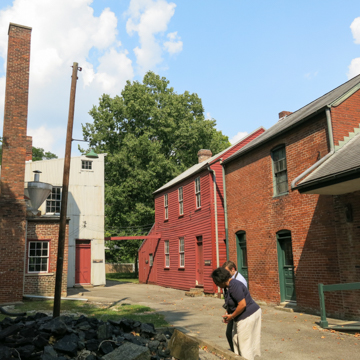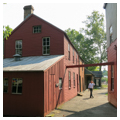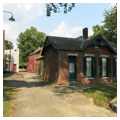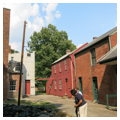The Schroeder Saddletree Factory is a remarkably intact example of a small industrial campus from the late nineteenth century. It was the longest continually operated, family-owned saddletree factory in the nation and is now the only complex in the United States that interprets the manufacturing process of saddletrees, the carved wood frames of riding saddles.
Madison was known as the saddletree capital of the Midwest in the later part of the nineteenth century. The small southern Indiana community boasted twelve factories that made these devices. John Benedict “Ben” Schroeder, a Prussian immigrant, owned one of the most successful of these operations. Schroeder started his business in 1878 when he purchased a small brick workshop, built circa 1876 and located next to Crooked Creek. Between 1878 and the 1940s, the complex grew to include the Schroeder family residence and four outbuildings for manufacturing including the assembly shop, blacksmith shop, woodworking shop, and sawmill/engine room.
The Schroeder residence is a one-and-a-half-story brick structure. The T-shaped building has a porch on the rear wing. The cross-gabled roof features pierced bargeboard in the front and decorative fascia in the side gable ends. Windows and the main door have dressed stone heads and sills. Behind the Schroeder residence are two brick buildings; a larger shop, built later, is opposite the three structures, separated by a lane.
When Ben died in 1909, four of his six children took over the business. They also started to manufacture stirrups, hames for horse collars, clothespins, lawn furniture, and even work gloves. By the time the family closed the business in 1972, after Ben’s last son died, the company had made up to half a million saddletrees and two million clothespins. As the last manufacturer of saddletrees in the United States, the closing of the Schroeder Factory signaled the end of an American tradition. After the business closed, historians documented the complex. The nineteenth-century belt-driven machinery was intact and the patterns still hung from the walls and ceilings. Even layers of dust remained on the floor, as if the factory workers had just paused for a moment from their work.
Today, the complex is owned and managed by Historic Madison Inc., a local non-profit organization. The site is part of the Madison Historic District, a National Historic Landmark considered to be one of the best-preserved examples of a nineteenth-century river town in the Old Northwest Territory. The factory is open to the public for tours.
References
Fife, Camille, B., “Madison Historic District,” Jefferson County, Indiana. National Historic Landmark Nomination Form, 2006. National Park Service, U.S. Department of the Interior, Washington, D.C.
“Madison Historic District,” Jefferson County, Indiana. Historic American Engineering Record, n.d. From Prints and Photographs Division, Library of Congress. (HAER IND, 39-MAD 43–).

